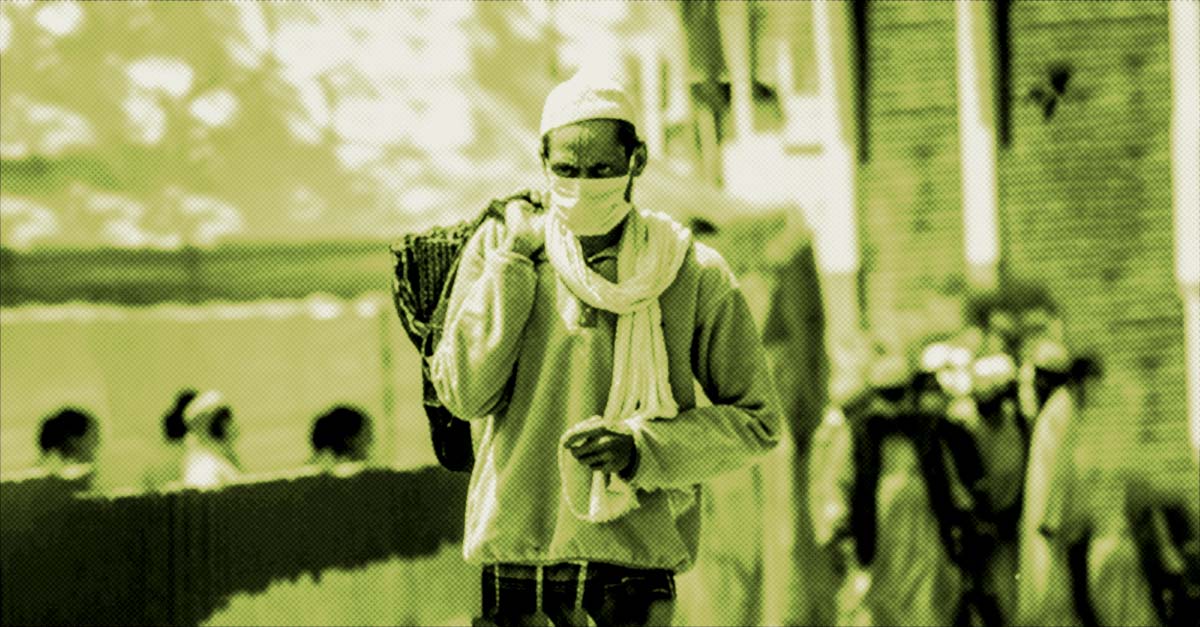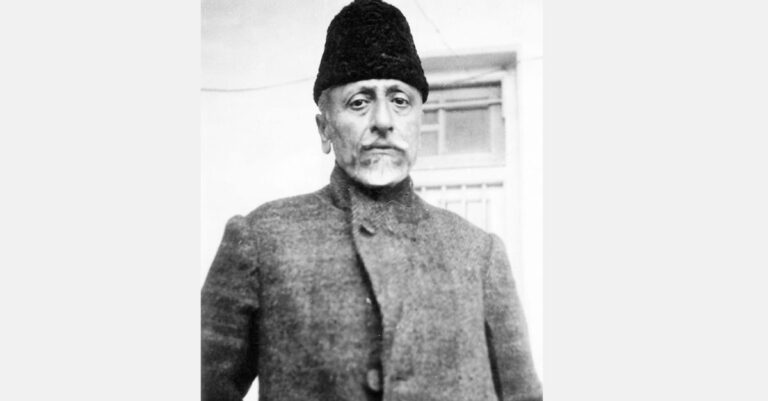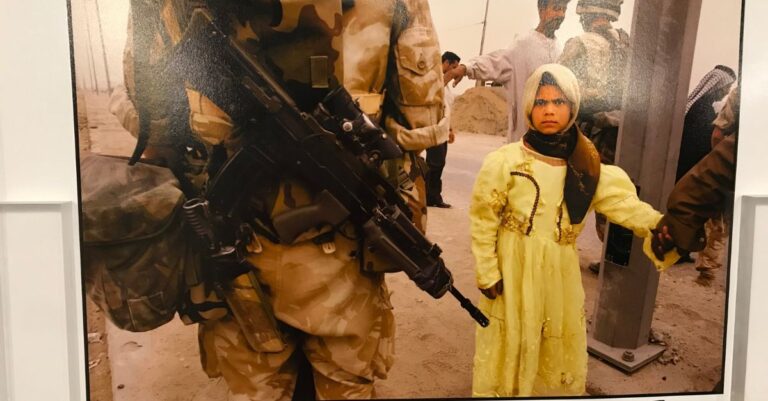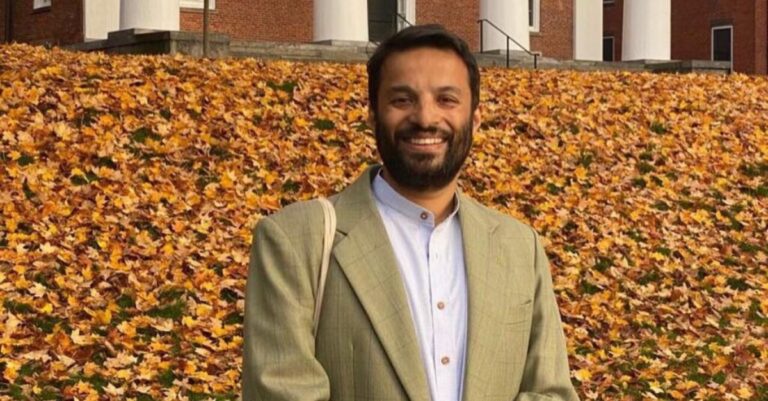Introduction
Before coming to the introduction of my topic “Covid-19 and the Criminalisation of Indian Muslims” let me give an example of a conspiracy staunchly working among the sophisticated hate mongers against religious minorities, especially Muslims. Some of the breaking headlines of June 12 because of the Prophet row run as “Blasphemy row: Islamist mob vandalise railway station, pelt stones at the local train in Nadia district in West Bengal (opindia.com),” “Bengal Protests: Mob Damages Train in Nadia, 100 Arrested Across State (The Wire),” “Trains vandalised, shops looted in Bengal during protests over Prophet remarks (India Today),” and so on and forth. And June 18 headlines run as “Govt offers measures for Agniveers as protesters torch trains, vandalise stations (India Today),” “Agnipath Protestors Burn Trains In Bihar, Pelt Stones On BJP MLA As Agitation Spreads Across India (Outlook),” “Burning Trains, Kids Crying in Stuck School Bus: 10 Scary Pics of Rampage in Name of ‘Agnipath’ Protests (News 18),” etc. Both days witness hate and violence, and in rage, range and intensity violence of ‘Agnipath’ protests is much more virulent than that of the Bethudahari pelting.
Now look at the ramifications of both the violent events among my Hindu colleagues and friends from ground reality. This angle of discourse will add clarity of thoughts to my argument. Colleagues of my college, situated just 23 kilometres away from Bethuadahari where trains were allegedly vandalized, not burnt, are suddenly awakened to the crisis of security and safety issues in West Bengal. They feel sick of Mullahas and “katuas” (a term derogatorily used for Muslims). WhatsApp, Twitter, Facebook and many other social platforms become barraged with provocative, hate posts from my friends and followers. Of course, all of my Hindu colleagues, friends and followers, are not intolerant. But many of them prefer to wear the mask of bhadralok gentility. They are not openly hostile to ‘Others’ (read Muslims). But to their inner scheme of things the minorities and Dalits are merely outsiders, or more precisely to say, fringe elements. This argument has a direct link to my paper, criminalisation of Muslims in the wake of the Covid-19 crisis and its mismanagement in India.
The Covid-19 pandemic has exposed the social hierarchies once again, and it became more pronounced in the news aired by print and electronic media on the one hand and the narrative generated by politicized groups on the other hand. The caste system (Varna), which was once encoded in the ancient Indian social system based on the vocation of the individual, has gradually become entrenched in the social life of present times. Although the Constitution of India safeguards an individual against all forms of discrimination theoretically, in everyday practice the discriminatory approaches betray its presence in the collective memory. Under such circumstances, the constitutional framework cannot help in changing the belief system that exists in one’s mind.
Social Cleavage in India
Social cleavage, be it in lines of religion, caste, or gender, is not new in India. It stays dormant under normal circumstances but becomes prominent at times of social conflict. During social conflicts, individuals identify themselves with groups they have an affinity with. For example language, religion, caste, and even gender may become a basis of their affinity. Although associations based on identity remain dormant during peacetime, they may take a violent form during conflict of interest situations. It was witnessed in India during the religious riots, Babri Masjid demolition, Nellie Massacre, Kashmiri Pandits’ exodus, and so forth. This fragmentation came to the forefront again during the Covid-19 crisis. Whereas viral diseases are not community-centric, it has been witnessed that by using majoritarian rhetoric, people belonging to lower-income groups, castes, and minority religions are either treated unequally or are implicated as super-spreader of the virus (D. Biswas, et all. 2021.) [i]
Religious Politics
Although substantial works on how caste and religious politics operate in a majoritarian state have been addressed in works like On Nationalism by Romila Thapar, A.G. Noorani and Sadanand Menon, What the Nation Needs to Know: The JNU Nationalism Lectures edited by Rohit Azad, Janaki Nair, Mohinder Singh, and Mallarika Sinha Roy, Majoritarian State: How Hindu Nationalism is Changing India edited by Angana P. Chatterjee, Thomas Blom Hansen and Christopher Jaffrelot, The Doctor and the Saint by Arundhati Roy, Hindutva as Political Monotheism by Anustup Basu to name a few, yet how the society and media respond to religious politics during pandemics in Indian society has not been addressed systematically.
It is to be understood in the context of international politics and orientalist projection of Others in Edward Said’s two important books Orientalism and Covering Islam: How the Media and the Experts Determine How We See the Rest of the World, which explain the role of media in creating and constructing essence. The demonization of Islam and the rise in Islamophobia had been largely created by some Western powers, through media as a political strategy. This strategy got a similar footing when the media reported the cause-effect relationship vis-a-vis ‘Tablighi Jamaat’ and Covid-19. As media has the potential in shaping ideological battles, the public is prone to get affected by what is shown in media Although all the contents in media are not accepted uniformly always, witnessing a socio-political situation in India, when ‘Tablighi Jamaat’ was accused of spreading 30 per cent of the Covid-19 cases in India, it became easier for divisive forces to add a communal colour to it giving rise to stigma and fear in the affected communities.
This stigma was further exacerbated by the media, social media, and a section of the political class. Two incidents show how the media played a role in fear-mongering and creating a stigma around the disease. The first was the Tablighi Jamaat congregation at Delhi which was shown as an act of calculated conspiracy instead of carelessness. The participants were shown as super spreaders and media played a crucial role in vilifying the participants. This was followed by a large number of fake news and videos being circulated which showed Muslims deliberately spreading the infection. Second, certain organizations affiliated with different political parties were consciously spreading fake news.
Media and Tablighi Jamaat
Media reports had quoted government sources as saying that since 1 January 2020, over 2,000 foreigners from 70 countries had arrived in India to participate in Jamaat activities. As the Covid-19 lockdown came into force on 25 March 2020, over 1,000 were left stranded in Nizamuddin. Within days, a state of panic had set in as reports of Covid-19 deaths and positive cases started coming in from various parts of the country. By early April, private television news channels had begun insisting that over 30 per cent of the corona-positive cases had the “Tablighi Virus”. Why and how did a virus come to be labelled with a community or religious tag? To understand it we need to study the background of recent political happenings that took place across India. The country was already in ferment over the Citizenship Amendment Act and the National Register of Citizens.
Shaheen Bagh and its women protesters were making international headlines and the February 2020 riots in Delhi had deepened the sectarian divide, and mutual distrust, exacerbating religious tensions. It was in this situation that the Tablighi Jamaat held its congregation. According to data shared by Equality Labs (a digital human rights group) with TIME magazine, the hashtag ‘Corona Jihad’ appeared nearly 300,000 times. The online attack became more and more vicious as reports of people leaving for different parts of the country from the Markaz poured in. For days, “Tablighi virus” and “Corona Jihad” trended on Twitter. Our entire focus shifted from fighting and containing Covid-19 to fighting the Tablighis and the Muslims, who the general population started equating as the same. Those were the initial days of our Covid-stricken lives, unsure of what awaited us and we were quick to blame the Markaz for all our misery.
During this Islamophobic onslaught, many articles and tweets expressed fears of Muslim apartheid. The usual practice of portraying Muslims as the other came into play, as did indulge in victimhood. The openly polarised discourse that was unleashed in mainstream media impacted the psyche of the general population. Most Muslims came out against the Jamaat, but the entire community was still clubbed together and labelled the “Superspreader”.
The Tablighis were guilty for sure for the congregation of thousands of people despite the prohibitory orders, and of not reporting cases, but the wave of hatred failed to see that the Tablighi Jamaat is not the sole representative of India’s 170 million Muslims and its actions should not be linked with the larger community. It is also pertinent to note that the Tablighi Jamaat preaches a narrow interpretation of Islam to some sections of Muslim society. But the way the Tablighi Jamaat’s role and, by extension, of the entire Muslim population’s involvement in the spread of the virus was covered by the mainstream media, it suddenly felt that Covid-19 had a religion.
Stories of the Criminalisation of Muslims
Soon, stories of discrimination against the poorer sections among Muslims started coming out. NDTV reported how vendors in the Mahoba district of Uttar Pradesh were allegedly targeted and stopped from selling vegetables by people who accused them of being members of the Tablighi Jamaat and of spreading the coronavirus. Old sociological stereotypical images of Muslims as people who live in ghettos and lack hygiene became handy tools to stigmatise the community. The Bharatiya Janata Party (BJP) MLA from Deoria in Uttar Pradesh, Suresh Tiwari, became famous overnight by issuing a warning to people against buying vegetables from Muslims.[ii] For weeks, videos have been circulating on WhatsApp falsely suggesting that Muslims might be deliberately spreading the virus. A 22-year-old man, accused of conspiring to spread Covid-19, was attacked in Delhi. In Punjab, Muslim herders were allegedly forced to throw away hundreds of litres of milk, because of rumours that they were spreading coronavirus through milk, the police said. Police in Delhi arrested a man for beating a Muslim vegetable vendor.[iii]
On March 25, after the entire country was placed under strict curfew, the chief minister of a state in North India attended a major Hindu celebration at a temple. Then there are the hundreds of thousands of migrant workers stranded away from their homes since the lockdown began, now crowded into soup kitchens and temporary encampments, at tremendous risk of spreading the virus. A third positive Covid-19 patient in Dharavi in three days, the world’s largest and most crowded slum, could spread the virus exponentially. Doctors and nurses, facing an acute shortage of personal protective equipment, have been assaulted or evicted from their homes as they attempted to administer tests. But in India, news channels have focused on the link between the religious gathering in Nizamuddin and the spread of the virus, which in turn has led to a huge increase in anti-Muslim sentiment. They have been fanning the flames of communal hatred, declaring that the virus is being spread by “corona-jihadis” in an act of terrorism. And anti-Muslim narratives are being turbo-charged by constant disinformation spread online and via WhatsApp.
While China and the US blame each other for the origin of the virus, and some have even falsely suggested that the coronavirus is a bioweapon, in India, the most popular conspiracy theory is that the spread of the virus can be solely blamed on Muslims. “The narrative being spread is Muslims will always follow Islamic laws over the rule of law, which means that they won’t follow instructions for their own good or the good of the community,” said Karen Rebelo, deputy editor at Boom, an Indian fact-checking website. “The other line of thinking is that Islam wants to punish kaffirs (nonbelievers) and actively spreading the virus would get rid of them.”
Discrimination against India’s 200 million Muslims has been on the rise ever since Narendra Modi was elected as the country’s prime minister in 2014 and reelected in a landslide in 2019. Modi, who rose to power on a wave of Hindu nationalism, has been accused of turning India from a secular democracy toward an authoritarian state dominated by Hindus. During Modi’s administration, violence against Muslims has gone up, and a muscular far right has flourished online. Social media has been awash with misinformation and hate on the unfolding drama around the Covid-19 cases that have been traced back to the Muslim gathering in New Delhi. Hashtags like #CoronaJihad, #NizamuddinIdiots, and #BanJahilJamat (“ban the vile gathering”) have dominated Twitter’s trending topics section in India. Top officials from India’s ruling Bharatiya Janata Party (BJP) have used terms like “Islamic insurrection” and “corona terrorism” to describe the gathering in Nizamuddin.
Tying Muslims to the pandemic is about fostering a sense of paranoia among the general population, said Nazia Erum. “It’s about making the general public feel like a certain community is actively trying to put them and their loved ones at risk out of some malicious agenda.” “The wholeworld is under a mental siege because of the coronavirus,” said Erum, author of Mothering A Muslim (2017). “When you add Islamophobia to the mix, everything becomes even scarier,” she added.
Photos from a crowded Muslim neighbourhood in the city of Kolkata, and separate ones from Pakistan, claimed that Muslims weren’t following social distancing rules. The images were shared by prominent Indian politicians, including the governor of Meghalaya, a state in northeast India, but fact-checking websites like AltNews showed that they were more than 12 years old. A video showing men in hats blowing into food packets in a kitchen went viral on WhatsApp, Facebook, and Twitter with a Hindi caption that claimed the men were Muslim cooks in a kitchen trying to spread the virus to customers. “This is the sick mentality of these people who wear caps,” said the caption. It was shared by prominent far-right Indian Twitter accounts, as well as by members of the BJP, one of whom tweeted the video and called for a boycott of “such shops”. A debunk showed that the video was actually from Malaysia and was at least a year old. Another video of a Muslim man spitting on a police officer went viral on Twitter and Facebook. The video claimed to be shot during the coronavirus lockdown. But Boom found that the video was from February, and the man in question spat on the cop for denying him home-cooked food in custody.[iv]
As the lockdown enters its second week and supply chains have broken, medicines and essential supplies are running low. Thousands of truck drivers are still marooned on the highways, with little food and water. Standing crops ready to be harvested are slowly rotting. The economic crisis is here. The political crisis is ongoing. And the mainstream media has incorporated the Covid-19 story into its 24/7 voices toxic anti-Muslim campaign. Tablighi Jamaat has turned out to be a super spreader. That is being used to stigmatize and demonize Muslims. The overall tone suggests that Muslims invented the virus and have deliberately spread it as a form of jihad.[v]
Fear and stigma are not uncommon during pandemics. Starting from the Spanish Flu of 1918 to the avian flu in recent times fear and stigma became a bigger problem in societies rife with deep social chasms. In India, communal polarization is not new either. Since independence political mobilization has happened on communal and caste lines. Community and caste-based mobilization become a problem when certain communities and castes become more susceptible to vilification during pandemics. This was evident during the Covid-19 outbreak which saw a marginalized section of people at the receiving end of negative stereotyping. This became explicit when the Tablighi Jamaat incident occurred. Communal vilification took place at different levels and the entire Muslim community was held responsible for the fault and mistake of a few. Fake news and videos were circulated to support that theory. This was further fed into the narrative that Muslims are perennially disloyal to the country.
Anti-Adivasi Narratives
Along with Muslims, people belonging to financially weaker sections, Scheduled Castes, or Adivasis and Dalits also faced similar atrocities. According to a Madurai-based NGO Evidence, 30 cases of caste-based violence have been reported from Tamil Nadu alone. It was reported that upper-caste men have placed thorns outside the homes of Dalits to make sure that they do not move out. Social and physical distancing has been espoused by the World Health Organization as an important aspect to contain the spread of the virus. For many, this has vindicated the age-old caste-based discrimination that existed in India.
While social distancing talks about maintaining a physical distance between two individuals, many tried to recreate a hierarchical connotation and supported a biased treatment towards Dalits. There were news reports that showed sanitation workers being attacked on suspicion of spreading the virus (Hindustan Times, 18 April 2020). In many quarantine centres, people refused to take food cooked by Dalits. When people from the Dalit communities were quarantined, in some places they were made to clean the toilets. From the Yadani community (waste picker and drain cleaning community) of Andhra Pradesh which has been barred from purchasing essentials such as food and medicine by their upper caste locales to children of the Musahar community of Varanasi sustaining on grass, the impact of the lockdown has been lopsided.
As an appalled world watched, India revealed herself in all her shame—her brutal, structural, social and economic inequality. As shops, restaurants, factories and the construction industry shut down, as the wealthy and the middle classes enclosed themselves in gated colonies, our towns and megacities began to extrude their working class citizens—their migrant workers— like so much and unwanted accrual. Many driven out by their employers and landlords, millions of impoverished, hungry, thirsty people, young and old, men and women, children, sick people, blind people, with nowhere to go, with no public transport in sight, began a long March home to their villages. They walked for days towards Badaun, Azamgarh, Aligarh, Lucknow, Gorakhpur, etc. Many died on the way. As they walked, some were beaten brutally and humiliated by the police who were charged with strictly enforcing the curfew. Young men are made to crouch and frog jump down the highway (Roy 2020, p. 209).
Conclusion
Covid-19 has posed a serious threat to mankind. It is one of the biggest pandemics of the century till now and we are not aware of how more such pandemics are awaiting mankind in the future. World Health Organization, which is closely monitoring the situation, has appealed to the countries of the world to share their respective research findings so that a collective and conscientious effort can be put to fight the pandemic. Furthermore, the WHO has also appealed that it is the time for facts, science, and solidarity and not fear, rumour, or stigma. Nevertheless, we see that world leaders and community leaders are constantly engaged in vilification based on race, community, and nation. Names like Spanish-flu, Chinese-virus, or corona-jihad are not only misnomers but also socially debilitating with long-term mental and political ramifications. Such adjectives not only attribute negative essence to communities, races, and nations but also belittle their human essence.
It is seen that the media and social networking sites have been used as tools to inflict mental and social wounds on such communities, especially in India. Whereas Media is considered the fourth pillar of democracy, it has been witnessed that more often than not they become the handmaid of the political forces. Media should not only maintain objectivity in airing the news but also must understand their social responsibility in maintaining peace and harmony in society. Instead of airing news that may create fissures in social relations, they must focus on constructive criticism instead of provocative criticism. However, in recent times they seem to become a factor in essentializing social groups which have a detrimental effect on society. This kind of essentialization not only creates fissures in society but also creates additional hurdles for social institutions to fight the crisis of the pandemic as seen from the discussion above.
Instead of considering the entire mankind as one in-group with a common objective of humanity and humane essence, our petty political outlook enslaves us in smaller outgroups within dark cells of prejudice and selfishness. The cause of the rise in Covid-19 cases in India can be attributed to such narrow politics based on essentializing race, religion, and culture. The stigma and fear which had aggravated the problem in India could have otherwise been contained with a cohesive and collective effort emanating from the solidarity of various socio-religious groups and communities. This episode leaves us with sufficient scope to rethink and reconfigure our social structure and outlook based on a more holistic humane essence than on a diminutively constructed cultural essence.
References
[i] Biswas, D., Chatterjee, S. & Sultana, P. “Stigma and fear during COVID-19: essentializing religion in an Indian context”. Humanit Soc Sci Commun 8, 130 (2021). https://doi.org/10.1057/s41599-021-00808-8
[ii] Kidwai, Rasheed and Naghma Sahar. “COVID-19 and Indian Muslims.” Available at https://www.orfonline.org/expert-speak/covid19-indian-muslims-69519/ Accessed April 27, 2022.
[iii] Ganguly, Meenakshi. “India has taken notable steps to contain Covid-19-but failed to curb surging anti-Muslim Rhetoric.” Available at India has taken notable steps to contain Covid-19 – but failed to curb ensuing anti-Muslim rhetoric (scroll. in) Accessed April 28, 2022.
[iv] Jha, Nishita and Pranab Dixit. “A Cluster Of Coronavirus Cases Can Be Traced Back To A Single Mosque And Now 200 Million Muslims Are Being Vilified.” Available at https://www.buzzfeednews.com/article/nishitajha/coronavirus-india-muslims-tablighi-jamaat Accessed April 28, 2022.
[v] Roy, Arundhati. “The Pandemic is a Portal” in Azadi: Freedom. Fascism. Fiction. New Delhi: Penguin Books, 2020, pp.203-214.
(This article was first published in Multidimensional Impact of Covid 19 Pandemic in India, eds. Basant kr Pradhan & Abu Siddik, Ashish Books, 2023. ISBN: 978-93-91979-90-4.)




